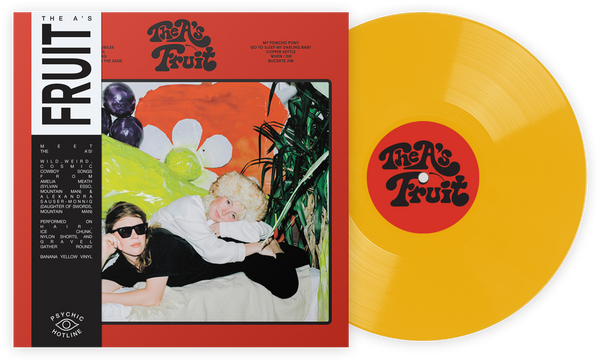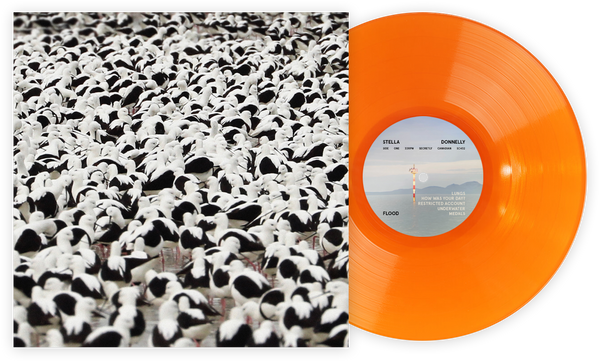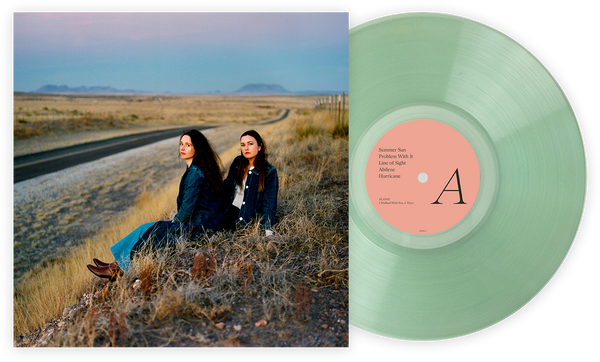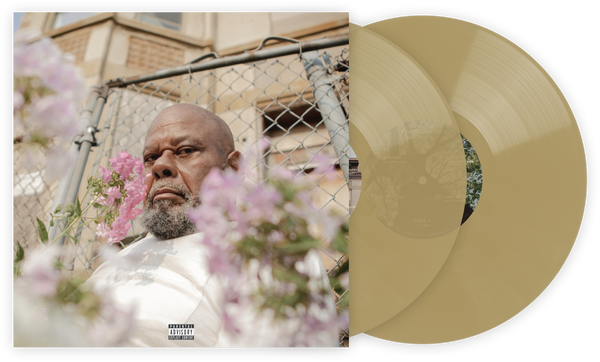Two Turntables and a Mic: The History of DJing and Turntablism
Welcome to VMP’s series, Two Turntables and a Mic, where we’ll guide you through the ins and outs of vinyl DJing, or turntablism. Today, we’re taking a short look at its history: where the term came from, the first live DJ event, the role of Jamaica’s sound systems in remixing and how hip-hop came to embody vinyl DJing.
The origins of the DJ are a bit muddled. There’s not exactly a singular time or person in history we can point to and confidently say when the first DJ emerged, because the exact definition of who a DJ is and what they do is debatable.
For some, the term “DJ” conjures images of a dark dancefloor illuminated every few seconds in synchronization with a parade of kicks and hi-hats. Perhaps, it’s someone with their hand tightly wound around a microphone, speaking with ferocity and speed over instrumental beats. For others, it’s the image of a person seated in a small studio, filling the airwave spaces during the time of day when the sun and moon battle for dominance over the cotton-candied horizons.

Origins of the ‘Disc Jockey’
The letters DJ derive from the phrase “disc jockey,” which is widely credited to American journalist and radio commentator, Walter Winchell, who first used the term in 1935. His usage of the words came to describe Martin Block as a result of the latter’s radio show, Make Believe Ballroom. Just a few years earlier, “The Crime of the Century” had occurred when baby Charles Lindbergh Jr. was kidnapped for ransom. Unfortunately, the incident ended in tragedy when his body was found. The trial for his killer was ongoing in 1935, and it was a highly publicized event with all eyes and ears following the case, with public outrage following closely behind.
While people tuned into the radio for updates as the trial continued, Martin Block utilized the time in between the news segments playing records, making people believe he was actually in a ballroom broadcasting live music from bands who were popular at the time — hence, the Make Believe Ballroom. Make Believe Ballroom was an instant hit. What initially began as a filler for news soon emerged with a life of its own. Listeners loved it, and the producers loved it because it significantly cut down on costs to actually hire bands and have them play in the studio live. It was an all-around success, and playing recorded music in such a public way proved to be an innovative idea at the time.

The First Live DJ Event
Jimmy Savile claimed to have migrated DJing from the radio to its first live setting in the town of Leeds around 1943. After experiencing a work accident from an underground coal mine explosion, Savile was undoubtedly out of commission for a while. Shortly after this accident, he visited a friend at his house and saw a tremendous contraption: it was a gramophone — yes a gramophone — connected to a radio. Enraptured by this make-shift musical device, Savile considered the thought that people would actually pay to listen to this thing. He needed money, and he saw an opportunity to make some. He borrowed the gramophone-radio apparatus, rented a room near his house and advertised for the event, charging one shilling for the experience. Although only 12 people showed up and the device went up in smoke not too long into the night, the experience of listening to recorded music in a live setting was there, and Savile continued to capitalize on subsequent events, eventually leading to a career in live DJing. This initial event is often cited as being the first time people paid to listen to records in such a setting — the first club. After Savile’s death in 2011, however, it was discovered that he sexually abused hundreds of women and children. Posthumously, he has been shunned from the DJing community.
Sound Systems Contribute to Remixing
As time progressed forward in the 1950s, Jamaican sound systems were coming alive across pockets of neighborhoods, particularly in Kingston. Sound systems, in this case, are groups of DJs, selectors and musicians who brought music to the streets. In Jamaican culture, the role of the DJ within sound systems was much like the role of a modern-day rapper. They would rap or, in other words, perform “toasts” over music. Selectors, on the other hand, were the people who chose the music to be played at such events and gatherings. While sound systems started off playing American R&B, they began looking toward producing their own music, leading to the fundamental idea of remixing and using existing music to create new pieces.

Hip-Hop’s Role in Turntablism
At its core, DJing stems from playing music publicly and is often thought of as choosing music to play, but people throughout history took the art to a new level — from music curation and selection to a whole different ball park. Eventually, people were able to go from simply playing records to manipulating them and creating new effects by using a turntable, resulting in a new form of DJing called turntablism, although it’s important to note some people make the distinction between a DJ and turntablist, while others consider it to be interchangeable. The term “turntablism” didn’t arise until around 1995, when DJ Babu used it to describe the more hands-on approach to a music performance that was taking place. Although the term wasn’t used until this time, people had already been fully immersed in turntablism prior to this, refining budding techniques and adding to the growing innovation.
Turntablism is more closely associated with hip-hop due to the pioneers in the genre who developed different techniques with the turntable. Several names stand out as having heavily influenced turntablism, and these legendary figures would change the history of music, creating their own genre with these new methods.
DJ Kool Herc has come to be known as the “Father of Hip-Hop” or the “Founder of Hip-Hop.” Born as Clive Campbell, DJ Kool Herc was born in Jamaica in 1955 before immigrating to the Bronx at the age of 13. DJ Kool Herc’s childhood in Jamaica ended up deeply shaping his pursuits in music, and he drew inspiration from the sound systems surrounding his neighborhood. At just 18 years old, he played his first event as a DJ on Sedgwick Avenue for his sister’s back-to-school party.
In a 1998 interview with DJ History’s Frank Broughton, DJ Kool Herc remembered, “[My sister] was going back to school and she wanted her some clothes money, she wanted to invest some of her money and she gave a party. She asked me to play the music. I was into my graffiti work, and that’s where I graduated from the walls to the turntables.” Following this party, the young DJ began throwing some of his own, hosting enough to have people coming back for a taste of his music and unrivaled energy. He started out at recreation rooms, but grew to venues that were more suited for his events.
The “Father of Hip-Hop” earned his name for developing a technique that would redefine DJing and set the foundation for turntablists and hip-hop for years to come. Using two turntables and two of the same records, he focused on the in-betweens of the music — the parts that made them fascinating to him. Instead of investing his energy on the chorus, the bridge or other elements of a song, he found a way to extend the song’s break. Pulling together two turntables and two of the same records, he would switch between each, repeatedly playing the song’s break — the part of the song that equates to a climax.
In the same interview with Broughton, DJ Kool Herc looked back on the idea and said, “The breaks was always a part of my format... How the break thing happened, I was seeing everybody on the sidelines waiting for particular breaks in the records.” He continued, “I wasn’t just a turntablist. I’m watching the crowd.” While DJ Kool Herc defined the method that would be called breakbeat, others who came after him refined the process in which it could be done.
Grandmaster Flash, born Joseph Saddler, was another kid living in the Bronx. He was no stranger to DJ Kool Herc’s parties, having attended some of his own, but seeing the legend in action for the first time in 1974 set Grandmaster Flash in motion. He wanted to be a DJ too. Grandmaster Flash took DJ Kool Herc’s breakbeats and created a smoother process by using a crayon to place a dot on the vinyl where the breaks would occur. He’d then drag the record back to the place indicated by the dot. While he played one record on one turntable, he was listening to the music on the other turntable with headphones on, listening ahead to find the next spot where he could create a seamless transition, which Grandmaster Flash coined as the “quick-mix theory.” Grandmaster Flash ended up pioneering several other techniques of turntablism that would become staples in hip-hop music, including punch phrasing.
Grandmaster Flash began playing with Gene Livingston, who went by Mean Gene. The two combined their equipment and worked together as partners, which he told to JayQuan of The Foundation in a 2002 interview. The two would often practice and play at Mean Gene’s house, and Grandmaster Flash’s equipment remained at his friend’s household for some time. But beyond Mean Gene, there was another person in the family who had a talent for the turntable.
“When I would go through the living room, there was this little kid in the living room playing around with his [mother’s] stereo. I noticed he was able to find the beginning of the break on a record... he would do this with one turntable,” the turntablist told JayQuan. “He would pick the needle up when the break was about to end; he would pick the needle up and drop it in the precise spot where the break began. I was so amazed by this! I couldn't do that.”
This boy had captured Grandmaster Flash’s attention. He mentioned including Gene’s younger brother into their group. He was certain that the boy could draw crowds, but Mean Gene forbade it. Instead, the two practiced in secret. The boy, born Theodore Livingston, would go on to become Grand Wizard Theodore. On the surface, Grand Wizard Theodore practiced with his brother, but in secret, he was Grandmaster Flash’s apprentice.
In a 1998 interview with DJ History’s Bill Brewster and Broughton, Grand Wizard Theodore discussed his beginnings as a DJ: “My brother Mean Gene — him and Flash were like partners together. They were like the Odd Couple. They both had different ideas of how they wanted to see themselves five and 10 years down the line.”
He continued, “So Flash went and formed his own group and with my brother Mean Gene, we formed our own group called the L Brothers. That was me – Grand Wizard Theodore – my brother Cordio and Mean Gene. We formed our own group. That’s when I started DJing, playing in the parks. And that’s when everybody finally realized that I was also a DJ, too.”
Like his mentor, he would come to develop his own techniques in turntablism, including the famed scratching. As the story goes, he told Brewster and Broughton, he had come home from school and was playing his music a little too loud for his mother’s taste. Storming into the room, she yelled at him, “If you don’t turn that music down!” But, with headphones still on as she continued to berate him, Grand Wizard Theodore struggled to hear what she was telling him. Thus, he “paused” the record by holding it, moving it slightly back and forth. On his own, he often sought ways to stand out from other turntablists, trying to distinguish his own techniques. This one, this scratching technique, was it. Even today, scratching is still one of the most closely associated techniques of DJing.
Each of these men shaped both turntablism and hip-hop, driving the cultures with their new innovations. As time progressed, so did the technologies surrounding the art of DJing. Thus, vinyl DJing, or turntablism, began to phase out in favor of modern controllers that mimic the original turntable design, but allow people to load digital music onto them. Despite the change in the way music is performed by DJs, it would not have been possible without the original methods and designs of the good old-fashioned vinyl and turntable. Even amid the technological developments, some DJs still carry on the art in its original form, opting to use vinyl to orchestrate dancefloors and energize crowds. As we continue to explore vinyl DJing and turntablism, we’ll also interview some of the people who champion the art in the modern era.
Jillian's origin story began with jam sessions to early 2000s Eurodance tunes, resulting in her current self-proclamations as an EDM aficionado. Jillian has followed her favorite artists to over 15 music festivals and countless concerts.












